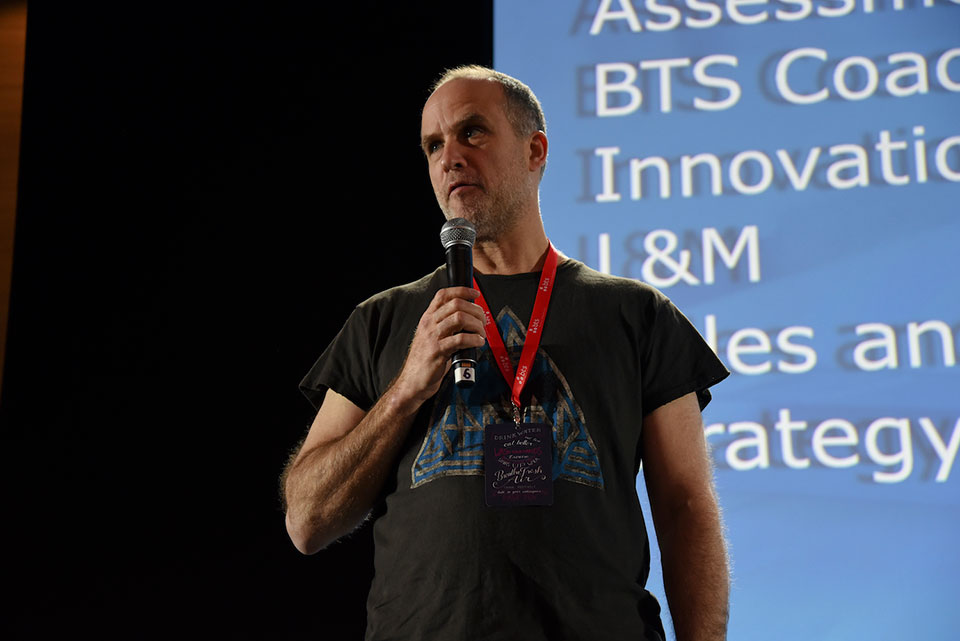How to Make Your AI Experimentation a Success

It wasn’t too long ago that artificial intelligence was viewed as an emerging technology, its applications for enterprise business little understood, let alone fully realized. As more companies are looking to tap into AI’s potential to transform their businesses, however, we’re finding new ways to implement this technology — and in some instances, learning how not to approach implementation.
Although most of us still don’t have a robot butler waiting on us, artificial intelligence is a feature that impacts our everyday lives in ways both big and small. From voice assistants to home automation to search predictions and spam filtering, AI is there, making things smarter and ensuring our lives are just a little bit easier to navigate.
This is especially true in the workplace, where machine learning and automation have ramped up productivity and improved a variety of tasks (think ad buying and workflow management). In fact, AI has become so good at certain tasks — especially trend predictions — that it’s now outpacing humans. As companies see these benefits, they’ll invest more in AI development.
But through all of this, it will be critical to develop AI the right way.
What to Do — and What Not to Do — When Experimenting With AI
Business leaders interested in experimenting with the new frontier of AI need to be careful to do things the right way instead of rushing headfirst into AI development and ultimately getting it wrong. With that in mind, let’s look at both the right ways and the wrong ways to approach AI:
- Do: Understand what AI can and cannot do.
The first step toward using AI is to demystify it. That means learning how it works, what it can do, and, even more importantly, what it can’t do. Understanding AI will allow you to discuss it with everyone (and perhaps more importantly, to not be duped).You don’t need to become a master programmer in order to understand the basics. There are plenty of one-day or even half-day courses that can tell you everything you need to know. Essentially, what these courses will teach you is that AI and machine learning use computers to process data in order to accomplish one of two things: prediction or clustering. Prediction involves gathering data and piping it into algorithms that then use that information to either predict a number or a category. Clustering uses the data to group things together.
Even the most complex AI solutions (such as self-driving cars or computerized clinical trials) are simple solutions that combine clustering and prediction algorithms together in very clever ways. Once you understand these two functions, you’re well on your way to using AI in your business.
Don’t: Outsource your understanding of AI to your technical team or vendors.
This will put you in a disadvantaged position where you’re not able to discuss, debate, and decide how to best use AI for your business.
- Do: Start with a big pain point.
When looking for problems that AI can solve, jump into the deep end. Start with a well-formed problem that has a measurable, significant impact on your business. In other words, pick something that if fixed, would have measurable units of impact big enough to be worth the lengthy and expensive experimentation.Say, for example, you want to use prediction and clustering to reduce the average time it takes a user to perform a specific task. The goal would be to find a task that’s repeated thousands of times over the course of a day and generates (or consumes) a lot of value.
Don’t: Use AI to create a shiny collection of low-value features.
This is tempting to do, and especially if you’re looking for some quick wins. But in reality, it’s rarely worth the money and effort. You’ll end up spending a lot of time and money on projects that won’t end up improving your business at a worthwhile scale. - Do: Establish what data you have and what data you need.
Once you’ve found a meaty problem, work out what kind of data you’d need to solve it, then compare that to the data you currently have. You might not have the data you need to build a model.In that case, you have two options: You can scrap it and free your team up to move on to the next idea, or you can invest in figuring out resourceful ways to acquire or create the data you need. Only take the latter option if you’ve determined that the problem you’re trying to solve is a sufficiently valuable opportunity that’s worth the extra investment of time and money.
Don’t: Start with the data you have and then look for a problem to solve.
This can be tempting because it can get you into the AI game more quickly and at a lower cost. However, this often results in your teams going after low-hanging fruit that doesn’t provide significant value for the company.
- Do: Assemble a diverse team that can experiment quickly and inexpensively.
To build and evaluate an AI solution, you need a team that has not only the right skill set, but also the right mindset. Any team that experiments with AI will inevitably come into contact with a lot of questions that have no satisfying answers. There’s no set answer for how much training data you’ll need, for example, or regarding which data features you should use. Getting through these questions requires patience and a willingness to experiment.It also requires a diverse array of talented people who can bring their unique experiences and viewpoints to the task at hand. You need a team with more than just technical expertise. At the very least, you need business, user experience, and legal experts as well. That way, you can ensure your team is qualified to make the necessary educated guesses.
Don’t: Have the project run by a homogenous group of technical experts or expect an immediate return on the project’s investment.
Developing an AI solution is not a straightforward or simple undertaking. There are going to be uncertainties, mistakes, and setbacks. If you or your team aren’t willing to face them head-on, then you’re going to end up disappointed every time.
AI has the potential to transform business for the better, but only if the people and data behind it are taking the right approach. Don’t jump into AI just because it’s the latest trend. Make sure you have the right problem, the right data, and the right team that is willing to take the time to experiment in order to truly produce the results you need.
Written by Peter Mulford.
Add CEOWORLD magazine to your Google News feed.
Follow CEOWORLD magazine headlines on: Google News, LinkedIn, Twitter, and Facebook.
This report/news/ranking/statistics has been prepared only for general guidance on matters of interest and does not constitute professional advice. You should not act upon the information contained in this publication without obtaining specific professional advice. No representation or warranty (express or implied) is given as to the accuracy or completeness of the information contained in this publication, and, to the extent permitted by law, CEOWORLD magazine does not accept or assume any liability, responsibility or duty of care for any consequences of you or anyone else acting, or refraining to act, in reliance on the information contained in this publication or for any decision based on it.
Copyright 2024 The CEOWORLD magazine. All rights reserved. This material (and any extract from it) must not be copied, redistributed or placed on any website, without CEOWORLD magazine' prior written consent. For media queries, please contact: info@ceoworld.biz
SUBSCRIBE NEWSLETTER








